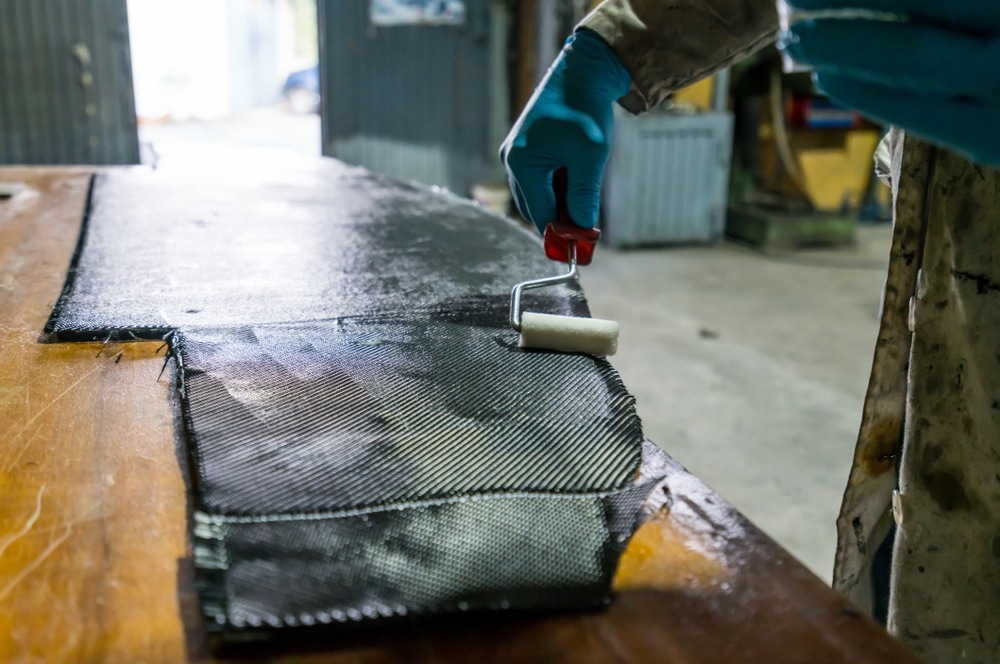In a paper recently published in the open-access journal Polymers, researchers presented a more appropriate method for enhancing the surface characteristics of coir-fiber-reinforced epoxy resin composites, as well as its implications for research on natural fiber composites.

Study: Effect of Coir Fiber Surface Treatment on Interfacial Properties of Reinforced Epoxy Resin Composites. Image Credit: Stockmanushots/Shutterstock.com
Background
Natural fibers are recently being developed by researchers due to their renewable and environmentally friendly properties. They are being used in applications such as construction, automotive, and textile industries. Natural fibers are also expected to be promoted in other domains in the future. Furthermore, the mechanical properties of natural fibers are similar to those of synthetic fibers but cost less and hence are extensively used.
Coir fibers not only help to minimize the environmental impact of coconut shell waste’s incineration and accumulation, they are also an efficient means of reusing coconut waste. Coir fibers have excellent mechanical properties, as well as optimum elongation of any known natural fiber, and the capability to increase the strength of epoxy resins. The present research aims to enhance the suitability of the epoxy resin matrix and the coir fibers, thereby improving their interfacial bonding capacity.
About the Study
In the present study, the team treated coir fibers using various methods, followed by using Fourier-transform-infrared (FTIR), X-ray diffraction (XRD), and scanning electron microscopy (SEM) to carry out a post-treatment assessment of the coir fiber properties.
Coir fibers having similar diameters and shapes were selected manually and immersed in distilled water for an hour to eliminate impurities from the fiber surface. This was followed by repeated washing with distilled water and drying before being cut into 50 mm. Further, a single-treatment procedure was used to obtain four kinds of coir fibers, namely, alkali-treated coir fibers (A-CF), microwave-treated coir fibers (M-CF), 3-aminopropyltriethoxysilane-modified coir fibers (S-CF), and acetic-anhydride-modified coir fibers (AA-CF).
Additionally, combined-treatment methods produced four kinds of coir fibers: (1) modified by 3-aminopropyltriethoxysilane after microwave treatment (M-S-CF), (2) modified by acetic anhydride after microwave treatment (M-AA-CF), (3) modified by 3-aminopropyltriethoxysilane after alkali treatment (A-S-CF), and (4) by acetic anhydride after alkali treatment (A-AA-CF).
Furthermore, the various post-treatment coir fiber morphologies were examined using SEM and analyzed with FTIR. Moreover, the fibers treated in various means were assessed for their crystallinity index (CrI) by XRD. Nine groups of coir fibers were used to prepare the pullout specimens. Based on the fibers used, the pullout specimens were named M-CFPS, U-CFPS, AA-CFPS, A-CFPS, M-AA-CFPS, S-CFPS, M-S-CFPS, A-S-CFPS, and A-AA-CFPS, respectively. This was followed by single-fiber pullout tests on the specimens with a universal testing machine. The interfacial bonding was compared and evaluated among the nine groups of epoxy resin and coir fibers.
Observations
The SEM micrographs showed that the non-cellulose components attached to the coir fiber surface were reduced to varying degrees following treatment with various methods, with A-S-CF showing the most apparent reduction.
Moreover, FTIR analysis revealed that the absorption peaks of A-AA-CF, A-S-CF, and A-CF had disappeared at 1,736 cm-1, indicating that the majority of the hemicellulose had been eliminated from the coir fibers following alkali treatment. The C-O-C stretching vibration within lignin was associated with the absorption peak at 1248 cm-1, resulting in the removal of lignin from the coir fibers after treatment with alkali. Furthermore, the XRD spectra of the fibers treated with different procedures had distinct peaks and similar shapes, indicating that the methods did not alter the fibers’ cellulose structure.
The pullout tests showed U-CFPS having a poor interfacial bonding capacity, with interfacial shear strength amounting to 4.223 MPa and pullout energy totaling 11.314 N.mm. However, A-S-CFPS demonstrated a considerable increase, with pullout energy of 32.301 N.mm and interfacial shear strength of 5.805 MPa that were 185.496% and 37.462% greater, respectively, than U-CFPS. This was primarily caused due to the fibers’ treatment with alkali.
The analysis of the interfacial characteristics determined that the test procedures improved the interfacial bonds between the epoxy matrix and the coir fibers. Furthermore, the Si element distribution figures showed visible coir fiber contour on the matrix interface and the fiber surface in A-S-CFPS. Therefore, it was determined that A-S-CFPS had higher interfacial bonding due to the combined effect of chemical bonding and mechanical interlocking between the epoxy resin matrix and the coir fiber.
Conclusions
To summarize, the researchers studied the combined-treatment techniques and single-treatment techniques and their influence on the interfacial bonding of epoxy resin matrix and coir fibers. The characteristic analysis and pullout tests of single fibers on various specimens showed that all the methods have the potential to improve the interfacial bond between the epoxy matrix and the coir fibers.
According to the authors, the results of this experiment were comparable to other studies and can contribute to further studies involving composites as the tests showed enhancement of the composites’ interfacial properties.
More from AZoM: A Closer Look at Semiconductor Test Equipment
Disclaimer: The views expressed here are those of the author expressed in their private capacity and do not necessarily represent the views of AZoM.com Limited T/A AZoNetwork the owner and operator of this website. This disclaimer forms part of the Terms and conditions of use of this website.
Source:
Ru, S.; Zhao, C.; Yang, S.; Liang, D. Effect of Coir Fiber Surface Treatment on Interfacial Properties of Reinforced Epoxy Resin Composites. Polymers 2022, 14, 3488. https://www.mdpi.com/2073-4360/14/17/3488